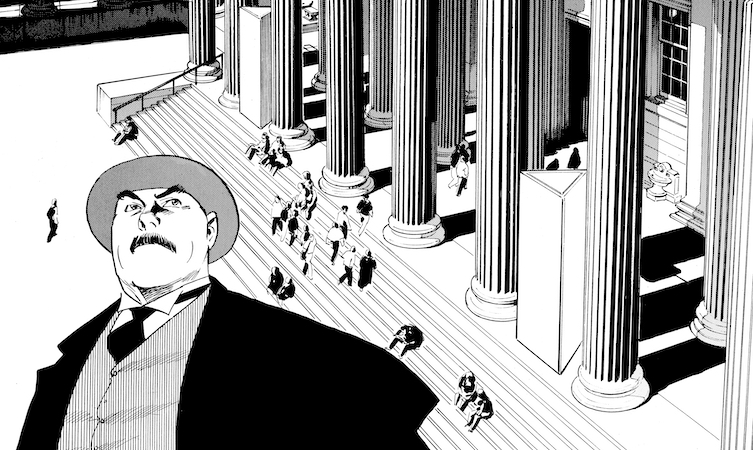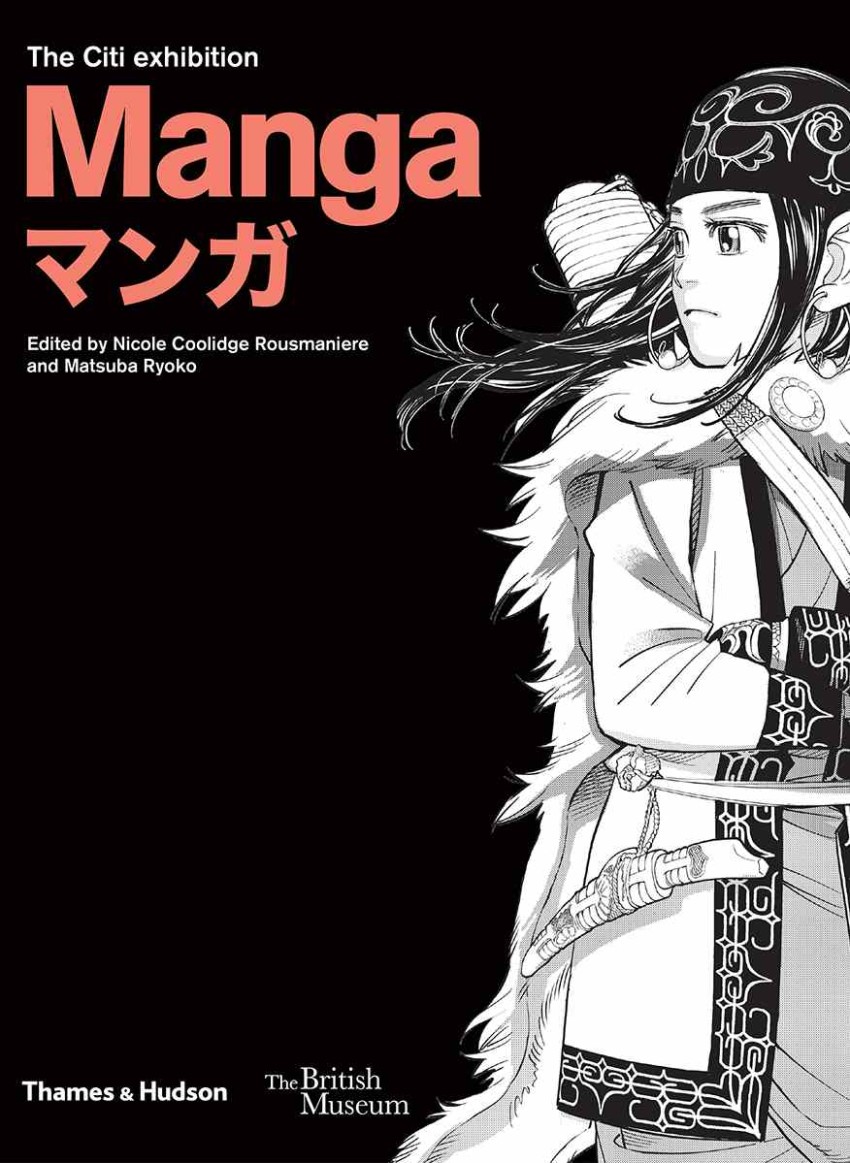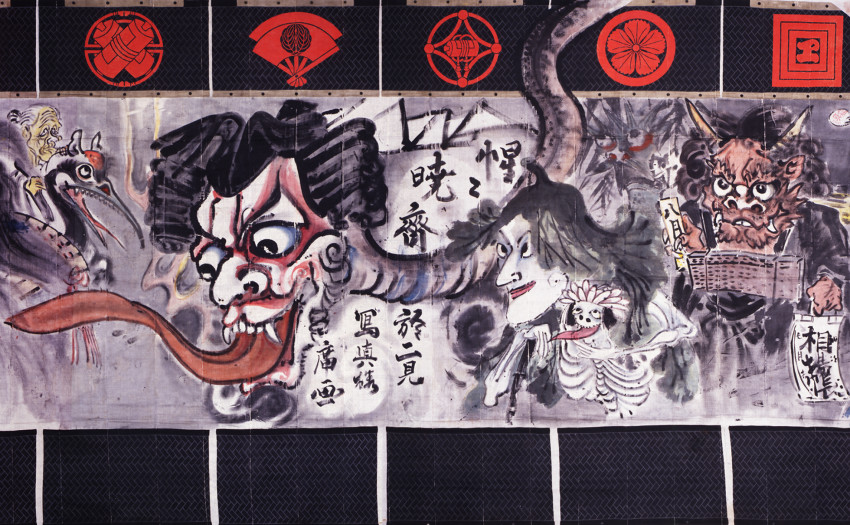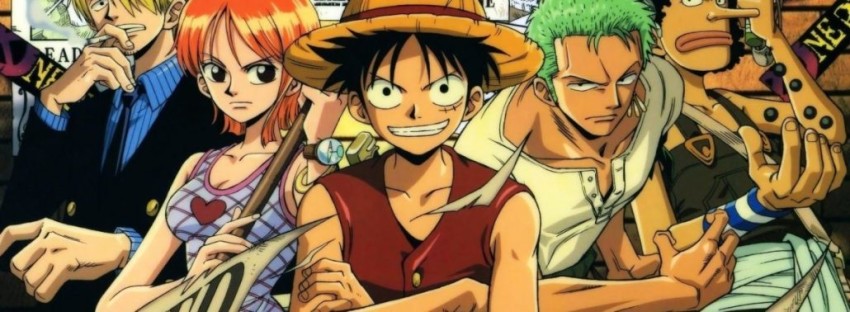Books: BM Manga
August 15, 2019 · 0 comments
By Jonathan Clements.
 From the exacting way that curator Nicole Coolidge Rousmaniere’s introduction refers to her British Museum exhibition as “Manga マンガ”, it seems that almost everybody who attended has failed to realise that the word is supposed to be said twice. This is not the BM “manga” exhibition, it is the BM “manga manga” exhibition, a doubling in two writing systems that recalls Frederik L. Schodt’s seminal 1983 book on the subject, Manga! Manga! The World of Japanese Comics.
From the exacting way that curator Nicole Coolidge Rousmaniere’s introduction refers to her British Museum exhibition as “Manga マンガ”, it seems that almost everybody who attended has failed to realise that the word is supposed to be said twice. This is not the BM “manga” exhibition, it is the BM “manga manga” exhibition, a doubling in two writing systems that recalls Frederik L. Schodt’s seminal 1983 book on the subject, Manga! Manga! The World of Japanese Comics.
As the exhibition winds down, its catalogue is going to form much of its historical footprint. On shelves and coffee tables in years to come, this hefty 350-page book is going to transform into a resource and an aide-memoire, a place for people to remember and revisit what they saw. Undoubtedly, it will form the germ of some new fans’ first appreciation of what manga is.
 There has been some carping in the media that this exhibition didn’t belong at the British Museum – including waspish comments from one journalist who has infamously never said a good word about the BM’s events ever since his young daughter was reprimanded for running in the galleries. But I agree very much with Andrew Osmond’s assessment that the exhibition presents a wonderful, affirmative sense of inclusion for fans of Japanese comics (and, from the looks of the visitors around me, Japanese tourists coming to gloat), along with a truly informative introduction for their baffled parents and families.
There has been some carping in the media that this exhibition didn’t belong at the British Museum – including waspish comments from one journalist who has infamously never said a good word about the BM’s events ever since his young daughter was reprimanded for running in the galleries. But I agree very much with Andrew Osmond’s assessment that the exhibition presents a wonderful, affirmative sense of inclusion for fans of Japanese comics (and, from the looks of the visitors around me, Japanese tourists coming to gloat), along with a truly informative introduction for their baffled parents and families.
I was ready to feel, as many grumbling press reviews have noted, that this was an exhibition that did not belong in the same procession of events that has included Vikings, the Emperor Hadrian and the Terracotta Warriors, but the British Museum has the clout, and the exhibition has the professional accomplishment, to legitimise itself. The British Museum itself is the arbiter of taste on such matters, and the book smugly includes a section on Professor Munakata’s British Museum Adventure, a spin-off from an earlier cultural contact that must have helped smooth the creation of this one.
The multi-authored book justly celebrates the materiality of its own creation. There is a section by Tim Clark about the extent and scope of the British Museum’s current holdings in Japanese graphic arts, ancient and modern, and a piece on Keiko Takemiya’s Genga Dash project, which has been one of the most influential elements of modern manga in museums – it’s Takemiya who has pushed for panels to be turned into artwork, making exhibitions in static spaces even possible.
Excerpts from modern manga wisely include big names overlooked abroad, along with a number of essays that ably summarise the exhibition for anyone who has been there, and indeed anyone who hasn’t. Stephane Beaujean smartly relates the sudden flourishing of sports manga to the conditions of the US Occupation, with samurai and martial arts purged from the curriculum, and creatives strongly encouraged to push the “healthy” competition of sports. Thomas Lamarre takes this ball and runs with it, so to speak, by investigating the position of the soccer manga Captain Tsubasa, as the epicentre of huge systemic changes in Japanese media in the 1980s, as an early harbinger of slash fiction, and as an icon so universal that it is has a fanatic following in the Arab world. Such sections are challenging and provocative to the know-it-all fan visiting the exhibition, presenting facets of the manga world less well-known.
Some other inclusions worthy of note include Hugo Frey’s account of the symbiotic relationship between manga and American alternative comics, in which he notes that Japanese comics not only formed an inspiration for the “adult” comics of the 1980s, but also were included among the representative samples published in Art Spiegelman’s RAW magazine. Rayna Denison brings up the rear with a chapter that draws necessary links between manga and anime – necessary because without it, huge chunks of the exhibition’s audio-visual material, including its closing big-screen presentation of Studio Ghibli, would make no sense.
 I certainly have no complaints about the inclusion of anime in an exhibition of Japanese graphic arts, nor of the superb 1880 theatre curtain decorated with demons, which clearly prefigures many elements of manga grotesquery. Asides in the catalogue, as in the exhibition’s own signage, hem and haw about the lack of direct connection between Japanese comics and 19th-century forerunners, but Adam Kern argues reasonably for kibyoshi penny-dreadfuls as a form of proto-manga, and curator Ryoko Matsuba carefully points out that Hokusai’s Manga were actually more like how-to manuals for other artists.
I certainly have no complaints about the inclusion of anime in an exhibition of Japanese graphic arts, nor of the superb 1880 theatre curtain decorated with demons, which clearly prefigures many elements of manga grotesquery. Asides in the catalogue, as in the exhibition’s own signage, hem and haw about the lack of direct connection between Japanese comics and 19th-century forerunners, but Adam Kern argues reasonably for kibyoshi penny-dreadfuls as a form of proto-manga, and curator Ryoko Matsuba carefully points out that Hokusai’s Manga were actually more like how-to manuals for other artists.
But since the museum catalogue is fated soon to enter the background radiation of conversations across many a British coffee table, I think it worth pointing out a few issues I have with its coverage of what Schodt so deftly summarised 36 years ago as “the world of Japanese comics.” From the very first interview, in which Tetsuya Chiba somehow comes out with a sentence that reads: “Japan seems to have its own unique history of manga,” it is plain that the project’s translators or editors have often been happy to write the word “manga” even when interviewees mean something that would have been better translated as “comics”. This immediately creates the terminological pitfall of having to use the term “Japanese manga”, as if manga could come from anywhere else, which turns several sections by Japanese contributors into incoherent gobbledegook. Go Ito, for example, a fiercely intelligent and influential thinker on post-modern Japanese comics, is ill-served by a translation that makes it sound at one point as if he is claiming that manga was invented by the Swiss.
Yes, we’re back on the tiresome merry-go-round of definition, an issue that the contributors to the book largely sidestep, and which they are only now tardily addressing, long after the book went to print. What makes manga different from comics elsewhere? The book, like the exhibition itself, largely expects this thorny question to be self-evident. They’ll tell, in depth, how comics culture works in Japan but expect you to bring your own pre-loaded knowledge of the local flipside. You might already be confident about the tropes and practices of comics in your own culture, the important creators, the sales figures, the history and the mechanics of production and distribution. If you’re not – if you’re some nice old lady who’s wandered in to the exhibition without ever having seen so much as a Bunty – then this is presented out of international context. There are, however, some interesting approaches towards a definition, including a thoughtful essay by lawyer Daisuke Okeda about the implications of some legal definitions of manga.
 There are also a few passages that have the words in the right order but somehow miss crucial nuances. The Year 24 Group, which was not a group, nor exclusively centred on Year 24 (1949), is presented as some sort of political movement, and not the random collection of female artists that it actually was. Tokiwa-so, the rooming house that became a crucible and salon for a group of early manga artists, is mis-described as a “manga studio”, set up by Tezuka in Tokyo in 1952. A few similar solecisms infect the work of Japanese contributors and interviewees, who have been allowed to witter with man-in-the-pub abandon in a medium of record, when more judicious editing might have snipped out some trite or misleading comments. I was also a little surprised at the number of prominent female authors missing from the recommended reading list. Casey Brienza’s Manga in America, Deborah Shamoon’s Passionate Friendship: The Aesthetics of Girls Culture in Japan, Natsu Onoda Power’s God of Comics: Osamu Tezuka and the Creation of Post-World War II Manga, Jennifer Prough’s Straight from the Heart: Gender, Intimacy and the Cultural Production of Shojo Manga, or Masami Toku’s International Perspectives on Shojo and Shojo Manga, for example, all of which surely help foster the exhibition’s agenda and sense of diversity, are absent. For an event that was so passionate about pushing the role of women in manga, here’s a bunch that don’t get a look-in.
There are also a few passages that have the words in the right order but somehow miss crucial nuances. The Year 24 Group, which was not a group, nor exclusively centred on Year 24 (1949), is presented as some sort of political movement, and not the random collection of female artists that it actually was. Tokiwa-so, the rooming house that became a crucible and salon for a group of early manga artists, is mis-described as a “manga studio”, set up by Tezuka in Tokyo in 1952. A few similar solecisms infect the work of Japanese contributors and interviewees, who have been allowed to witter with man-in-the-pub abandon in a medium of record, when more judicious editing might have snipped out some trite or misleading comments. I was also a little surprised at the number of prominent female authors missing from the recommended reading list. Casey Brienza’s Manga in America, Deborah Shamoon’s Passionate Friendship: The Aesthetics of Girls Culture in Japan, Natsu Onoda Power’s God of Comics: Osamu Tezuka and the Creation of Post-World War II Manga, Jennifer Prough’s Straight from the Heart: Gender, Intimacy and the Cultural Production of Shojo Manga, or Masami Toku’s International Perspectives on Shojo and Shojo Manga, for example, all of which surely help foster the exhibition’s agenda and sense of diversity, are absent. For an event that was so passionate about pushing the role of women in manga, here’s a bunch that don’t get a look-in.
Despite such cavils, the Manga exhibition catalogue is sure to form the basis for a whole new generation of new manga readers, as it lures a fair proportion of previously uninterested attendees into trying the world of Japanese comics. Its checklist diligently describes all the works that were on show, so that anyone trying to remember the name of That Thing About the Shouty Boy Trying to Collect Dragon Balls are able to construct a potential shopping list for themselves. Considering its page-count and contemporary date of publication, it advances only in a few very small increments beyond the achievement of Frederik Schodt in 1983, but its footprint, reaching many thousands of people who have surely never given manga much thought before, is sure to make it one of the key moments in the history of manga in the United Kingdom.
Jonathan Clements is the author of Anime: A History. The British Museum Manga exhibition runs in London until 26th August.
Leave a Reply